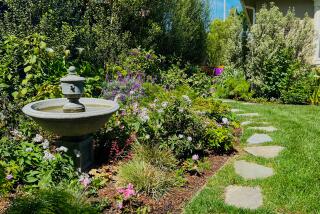Photo file: Enchanted evenings in Monet’s gardens
Since Claude Monet’s death in 1926, Giverny Gardens in Normandy, France, where the French Impressionist painted his famous water lilies, has become a pilgrimage for artists, historians and tourists hoping to absorb the aura of the countryside and be inspired by the enchanted oasis.
German photographer Elger Esser journeyed to Giverny in 2010 to experiment with an altogether different aesthetic, an antithesis of Monet’s shimmering, colorful work. The result can be seen in his collection of photos, “Nocturnes à Giverny” (Schirmer/Mosel).
“I wanted to get as far away from Monet and the touristy postcard version as possible,” Esser said from Belle-Île-en-Mer, off Brittany. He accomplished this by photographing the flora, foliage and familiar Japanese bridge in black and white at twilight and by moonlight.
“I saw all these colors you can only see by night,” Esser said of the time-consuming process, which took four months. During the night shoots, he was restricted to only one image per evening due to the six-hour exposure time. In describing the feeling of the photos, Esser said, “There are so many photos of Monet’s garden. I feel like I have removed him from the garden.”
Esser’s interpretation has its own vintage, timeless style, devoid of Monet’s familiar blue and mauve hues, yet the essence and romance of the garden are still discernible.
Featured in the book are 15 photographs, divided into two series: “Giverny,” taken in the evening and at dusk, and “Combray,” a reference to Marcel Proust’s fictional place in his novel “In Search of Lost Time.” These five images were processed using the 19th century technique of heliogravure, which gives the images a nuanced, antique-like, high-quality feel.
What interested Esser was that Monet had constructed the garden for his work. He purchased the nearly 4-acre property 10 years after moving there with his family in 1883, dug the lake, built the bridges and selected all the flowers and plants. “He wanted to have a studio as a landscape, the landscape as a studio,” Esser noted. “It’s an entirely constructed landscape.”
Esser was born in Stuttgart, raised in Rome and studied at the Düsseldorf Academy of Fine Arts, but he considers France a part of his soul. “I can find everything in France. It’s the best connection between the high culture of the 19th century and the history of photography, because everything started in France,” he said. “I’m following the path of photographic discovery.”
Elger’s work has been shown around the world, including at the Rose Gallery in Santa Monica.
More to Read
The biggest entertainment stories
Get our big stories about Hollywood, film, television, music, arts, culture and more right in your inbox as soon as they publish.
You may occasionally receive promotional content from the Los Angeles Times.






